Developments in research misconduct—What peer reviewers need to know in 2022 and beyond

The peer-reviewed academic journal is widely considered the gold standard for the dissemination of up-to-date and reliable information across many academic fields. Scholarly journals have existed for hundreds of years, and peer review has existed in some sense since 17311.
Peer review remains a vital “filter” that keeps the quality of published research high. Despite the lack of pay and sometimes-thankless nature of the work, peer reviewers are vital to the process of academic publication. Without them, we would place little trust in academic publications, and the research community places a great deal of trust in peer reviewers to make correct decisions. A peer reviewer “wears many hats.” Usually, they act like the referee of a sports match, serving as an impartial observer who provides informed, professional judgments to ensure that results are plausible and that findings are reported correctly. A peer reviewer can also act like a coach, providing vital guidance to help people present their research clearly and with greater impact. I would argue that a peer reviewer has one more important job—being a detective who hunts for clues suggesting academic misconduct.
Research-integrity breaches
Research misconduct is not rare. According to a 2021 meta-analysis by Xie et al.2, the prevalence rates of falsification, fabrication, and plagiarism (FFP) and other questionable research practices were 2.9% and 12.5%, respectively. Given the many tens of thousands of papers published every year, it is likely that we will never identify every instance of misconduct. Pressures created by negative aspects of research work environments, such as the controversial “publish or perish” culture, may lead some scholars to give in to temptation and falsify results or ignore vital standards for academic research3.
However, breaches in research integrity can be incredibly damaging—to the point that they can invalidate years of research and place the careers of innocent people in jeopardy. The Schön scandal4 or the recent Alzheimer’s disease controversy5 not only invalidated years of research and exposed co-authors to great scrutiny, but also undermined faith in the process of scholarly publishing. Thus, it is vital for peer reviewers to be on the lookout and make sure that unethical research does not find its way into published academic literature.
FFP represents the most conspicuous form of misconduct in research. However, many other forms of ethical breaches exist, including failing to obtain informed consent, fraudulently including somebody as an author, not disclosing relevant conflicting interests, and “salami slicing,” where something that is suitable for one publication is stretched over multiple papers.
Image manipulation is another major form of research data falsification, which recently has been at the center of the Alzheimer’s disease research controversy.
New developments in unethical practices
Fabrication and fraudulent conduct are not the only ways of breaching research ethics. The 20th century brought to light many atrocities and questionable practices perpetrated against both humans and animals, such as the Tuskegee syphilis study6 and the monkey experiments of Harry Harlow7, respectively. The Declaration of Helsinki and other guidelines have greatly improved both the awareness of adherence to the ethical treatment of humans and animals. However, scholars are increasingly recognizing that they have broader ethical responsibilities.
“Helicopter science” or “helicopter research” is one practice that has recently attracted great attention. In helicopter research, researchers from a well-developed country use the data collected by researchers overseas, usually in a developing country, without providing proper credit or authorship befitting their role8. For example, if a researcher in London asked a researcher in Liberia to obtain samples for their tropical disease studies, and then failed to properly credit the Liberian researcher whose expertise and materials were necessary to realize the study, that would be considered helicopter research.
Another increasingly common form of academic misconduct is the use of research paper mills. A research paper mill essentially sells authorship to research articles, often based on shoddy or falsified data. In 2022, the issue reached new prominence, as the Russian academic paper mill company “International Publisher Ltd.” was found to have charged up to $5,000 for authorship positions9. A preprint released in the same year reported evidence indicating an unethical collaboration between paper mills and journal editors to sell authorship in more than twenty papers across four journals10. The scale of this problem remains unclear, and it is likely more instances of this practice will crop up in the future.
Communicating concerns to the journal editor
Upon suspecting misconduct, it is vital to make your concerns known to your contact at the journal, who will usually be an editor. Editors are aware that the reputation and commercial value of their journal relies heavily on whether they are trustworthy sources of information, and they will almost certainly want to hear about any potential instances of misconduct.
Nobody likes to be difficult or kick up a fuss when they are unsure if something really is wrong, but a “better safe than sorry” policy is best when dealing with potential cases of academic misconduct. Once you have identified causes for concern, compile your suspicions in a document and back them with clear reasons, marking out problematic samples from the text Share this with the journal editor so that they can investigate the matter further for themselves.
A research-integrity checklist for reviewers
In summary, I would like to give a brief, non-exhaustive list of some of the major things to watch for when checking for evidence of research misconduct.
- Check that all standard and journal-specified ethical declarations have been included with the paper, including funding and data availability declarations.
- Check if the study methodology is approved by a relevant institutional review board
- Investigate images for signs of manipulation. Ask author(s) to explain anything that appears suspicious or incongruent.
- Consider data sources—Have the people who sourced the data been credited?
- Check the text. Does the text style or language quality change abruptly? Sometimes, this may be because different sections of a manuscript are written by different co-authors. However, it may help to search portions of the text with the different style online to see if it may have been plagiarized.
- Does the paper extensively cite a previous paper by the same author(s)? Check to see if the data is being reused. The author(s) may be making redundant publications.
References
1. Shema, H. The Birth of Modern Peer Review. Scientific American Blog Network https://blogs.scientificamerican.com/information-culture/the-birth-of-modern-peer-review/ (2014).
2. Xie, Y., Wang, K. & Kong, Y. Prevalence of Research Misconduct and Questionable Research Practices: A Systematic Review and Meta-Analysis. Sci. Eng. Ethics 27, (2021).
3. National Academies of Sciences, E., Affairs, P. and G., Committee on Science, E. & Science, C. on R. Understanding the Causes. Fostering Integrity in Research (National Academies Press (US), 2017).
4. Physicist found guilty of misconduct. Nature (2002) doi:10.1038/news020923-9.
5. Potential fabrication in research images threatens key theory of Alzheimer’s disease. https://www.science.org/content/article/potential-fabrication-research-images-threatens-key-theory-alzheimers-disease.
6. Tuskegee Study – Timeline – CDC – NCHHSTP. https://www.cdc.gov/tuskegee/timeline.htm (2021).
7. Harry Harlow: Monkey Love Experiments – Simply Psychology. https://www.simplypsychology.org/harlow-monkey.html.
8. Adame, F. Meaningful collaborations can end ‘helicopter research’. Nature (2021) doi:10.1038/d41586-021-01795-1.
9. Perron, A. B. E., Hiltz-Perron, O. T. & Victor, B. G. Revealed: The inner workings of a paper mill. Retraction Watch https://retractionwatch.com/2021/12/20/revealed-the-inner-workings-of-a-paper-mill/ (2021).
10. Abalkina, A. Publication and collaboration anomalies in academic papers originating from a paper mill: evidence from a Russia-based paper mill. at https://doi.org/10.48550/arXiv.2112.13322 (2022).




